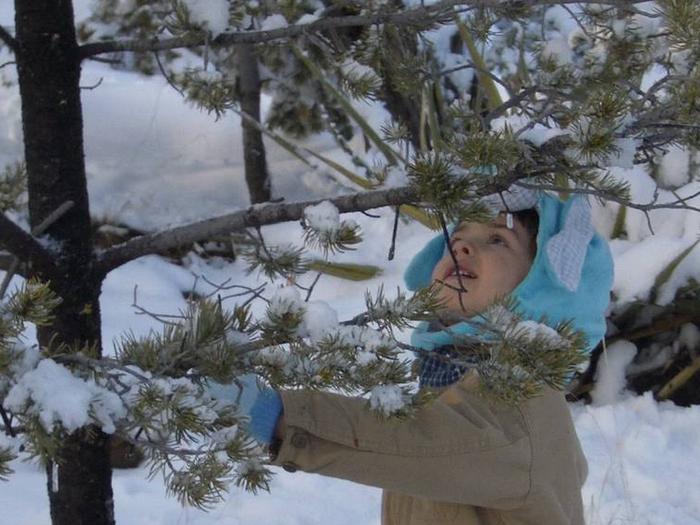Cibola National Forest Christmas Tree Permit
Cibola National Forest and Grasslands
The selection and cutting of a Christmas tree has been a treasured New Mexican tradition for many generations. Lifelong memories are built during these special times and we are happy to be able to offer tree permit sales and help with any information gathering you’ll need to make your trip a safe and enjoyable one.
This permit allows you to cut a Christmas tree within certain designated areas of the Cibola National Forest. Make sure to review the maps below that show the allowed cutting areas and Ranger Districts. Purchase a permit for the Ranger District of the designated area you plan to cut your tree.
Also, please be sure to read and agree to all the tips and guidelines when selecting your tree.
Happy holidays!
Need to Know
Selecting Your Tree
Tree Height: 15 feet maximum. See your selected permit for specifics on tree height.
Cut trees as close to the ground as possible, leaving a stump no higher than six inches. Cut all remaining branches from the stump and scatter.
Make sure to know your species and what is allowable on each district. On Mountainair and Mt. Taylor Ranger Districts you may cut Pinon, Juniper, Douglas Fir, Ponderosa Pine, Blue Spruce, Engelmann Spruce, Sub-Alpine Fir. On Magdalena and Sandia Ranger Districts you may cut Pinon, Juniper, Douglas Fir, White Fir, Ponderosa Pine, Spruce and Sub alpine Fir.
Take the whole tree. Do not remove the top of the tree; cut down the entire tree.
If snow is on the ground, remove it from around the stump so you can accurately measure the stump and tree height.
Where to Cut Your Tree
A tree permit must be purchased by Ranger District. You will only be permitted to cut your tree on the District where your permit is purchased. We only sell permits for Sandia (in limited quantities), Magdalena, Mountainair or Mt. Taylor Ranger Districts. BE SURE TO CHECK YOUR MAPS.
The tree cutting season begins on Thanksgiving day and runs through December 31.
A maximum of two trees per household may be purchased.
When purchasing a permit online, print out your permit and display it on the dash of your vehicle.
Do not cut on private land, in wilderness areas, designated campgrounds, along roadways, in recreation sites, including but not limited to picnic areas and trailheads, or within the military withdrawal.
Do not cut in active timber sales or areas that have been planted with new trees.
Close any gate that you opened. If you find a locked gate, you are probably on private land. Please check your map.
Stay on roads open to motorized use on the maps provided. For clarification on use of Forest Service roads and other motor vehicle travel, please visit www.fs.usda.gov/detailfull/cibola/maps-pubs/?cid=FSEPRD585904&width=full
Park only where allowed and recognize all day-use fees that may apply at certain recreation sites.
Planning Your Trip
Helpful Cutting Tips
Carry your tree carefully out of the woods. Dragging the tree will rub off needles and bark.
If the tree is too big to transport inside of your vehicle, wrap it in canvas to prevent wind damage.
Once home, cut the bottom of the trunk off and place the freshly cut trunk in a bucket of water. Replenish water.
If storing your tree outside for a few days before putting it in the house, keep it in an area protected from the wind, such as the north or east side of your house or under a shaded tree.
Tools you might want to consider bringing with you include a measuring tape to ensure you select a tree that fits in your home; handsaw to cut your tree; gloves to protect your hands; boots to protect your feet; a tarp to sit on and/or to move your tree once it's cut; and rope or straps to secure your tree to your vehicle.
Choose a tree from a dense forested area, which will give the remaining trees more space to grow.
Cut the leftover branches from the stump and scatter them.
How to Plan Your Trip
Before you leave home, be sure to measure the space where you plan to place the tree in your home (height and width), and measure the space in your vehicle where you will be transporting the tree.
Cell service may be spotty or unavailable. Be sure someone knows where you are and when to expect you back.
Check the latest weather conditions, forest warnings and road closures before you leave on your trip. Dress warmly and take extra dry clothes. Expect winter weather, including cold temperatures, snow and winds.
Print out the available map from this site and bring it with you. Don’t rely on GPS because it may not be up-to-date with forest service roads. Remember to also print your permit and display on the dashboard of your vehicle.
Roads may not be plowed. Carry tire chains, shovel(s) and a tow chain, 4-wheel drive recommended. Use caution when driving on roads as they may be snow packed and icy during the cutting season. Be sure your vehicle has a full tank of gas. Bring a spare key and give it to someone else in your party. Don’t get locked out of your car! Park in areas so that traffic can get by safely, and do not block gates.
If possible, plan your trip when roads are firm and dry to reduce damage to the roads. Call the Ranger District for current road conditions.
Bring plenty of food and water with you as well as an overnight survival kit in case you become stranded. Start your day early. Be sure to find your tree and leave the woods before dark.
District maps are available on the site and should be carried with your permit.

